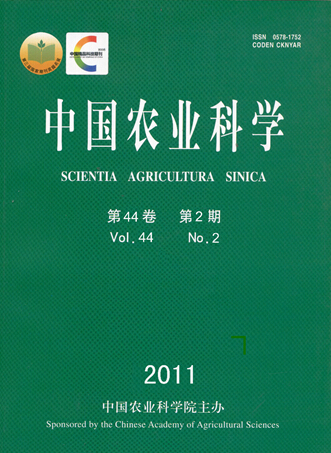【Objective】 As ear traits have a significant correlation with maize yield, genetic dissection of ear traits under different environments will be beneficial to marker-assisted breeding in high-yielding maize hybrids and future basic research.【Method】 Four ear traits including ear length (EL), ear diameter (ED), kernel number per row (KRE) and grain weight per ear (GW), were investigated using two sets of F2:3 populations, which were derived from crosses of Y478×Huangzaosi (Y/H) and Q319×Huangzaosi (Q/H), respectively. The two populations were evaluated in three locations, i.e. Beijing, Henan and Xinjiang, in 2007 and 2008. Quantitative trait locus (QTL) analysis was then conducted to understand their genomic locations and gene effects. 【Result】Totally 33 and 46 QTLs were detected in single-environment analysis for Y/H and Q/H, respectively,which were mainly distributed on chromosomes 4, 5, 6, 7 and 10. Furthermore, it was found that four and six QTLs detected in different environments for the two populations respectively, were located in the same genetic regions and were not significant interaction with environment in multiple-environment joint analysis. The largest phenotypic contribution was from qGW1-4-1 on chr. 4 and qKRE1-5-1 on chr. 5 in Y/H, all with the phenotypic variation explained of more than 10% in the detected environments, and from qKRE2-3-2 and qED2-2-1 in Q/H, with the phenotypic variation explained of 7.23% to 18.3% and 7.1% to 15.6%, respectively. In multiple-environment joint analysis, two and six QTLs, which had significant interaction with environment, were detected in Y/H and Q/H, respectively, and the number of QTLs for GW interacting with environment was the most. The results of epistasic analysis indicated that only a few significant QTL presented epistasis, and most of the interactive loci did not link to any detected QTLs. Comparison of the results in the two F2:3 populations, four congruent QTLs were identified for GW and KRE in bin1.10, bin5.05, bin6.05 and bin7.02, respectively. 【Conclusion】 Those genomic regions detected in different environments and genetic backgrounds could be useful in marker-assisted selection and future fine mapping and positional cloning. However, more attention should be paid to the effects of environments or epistasis.









